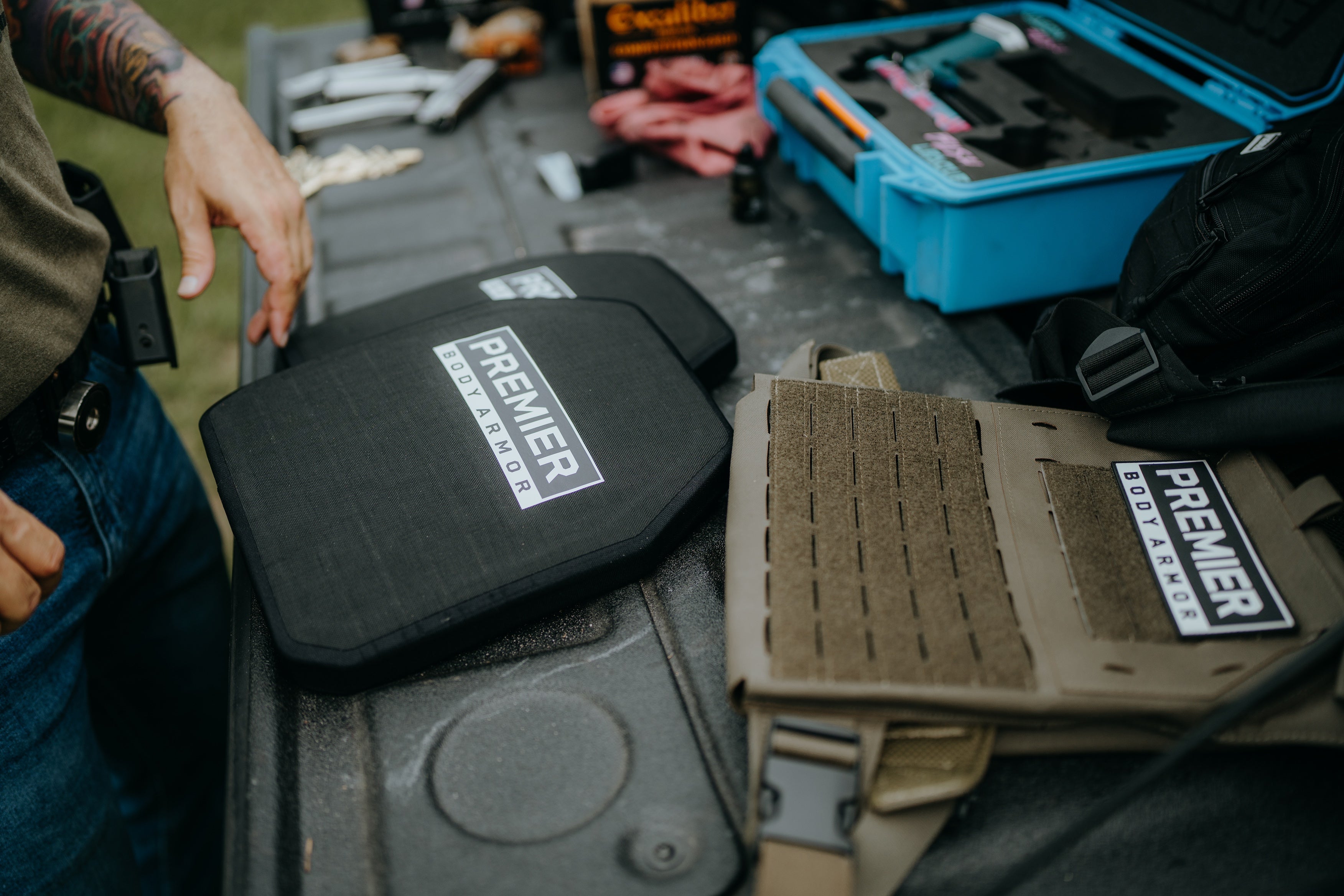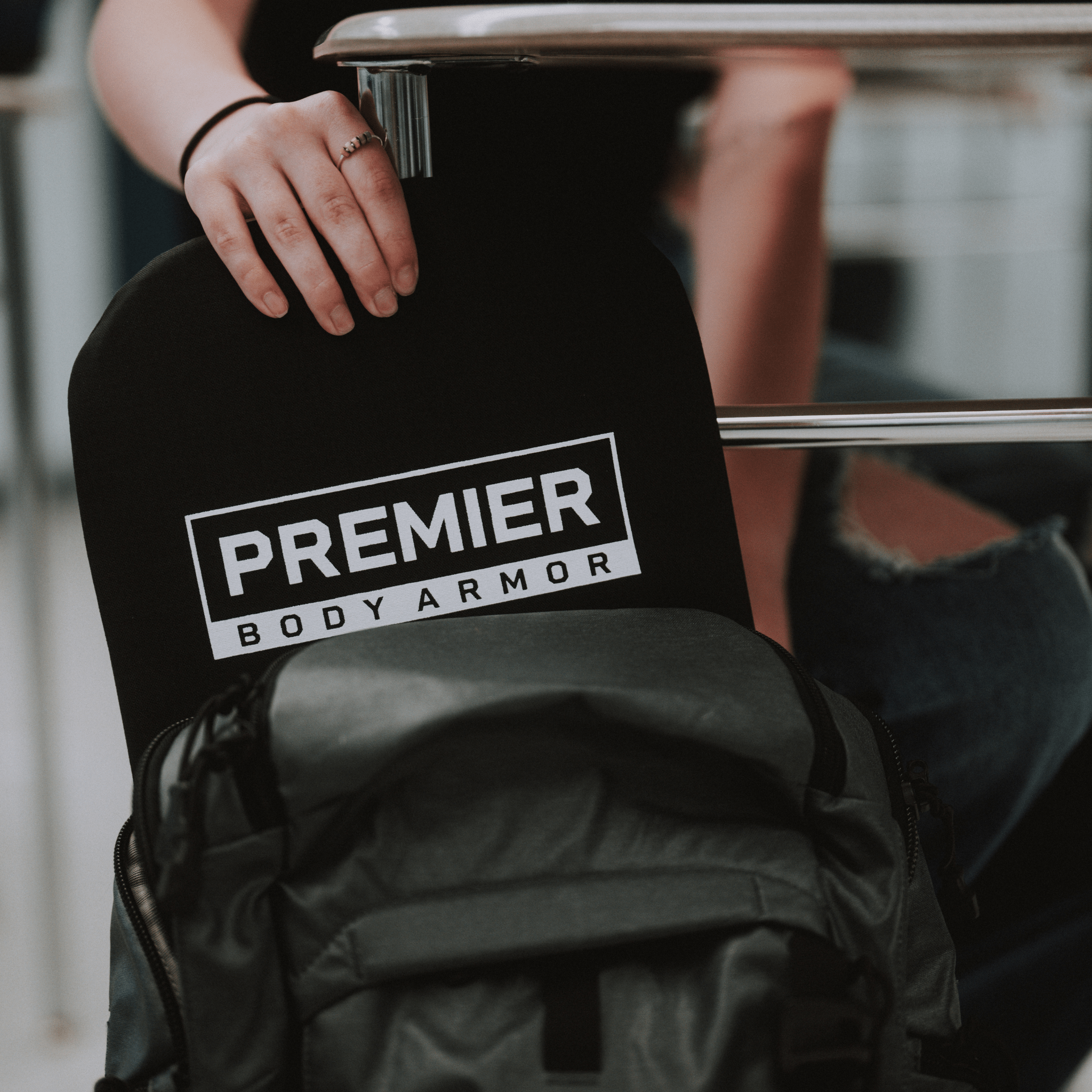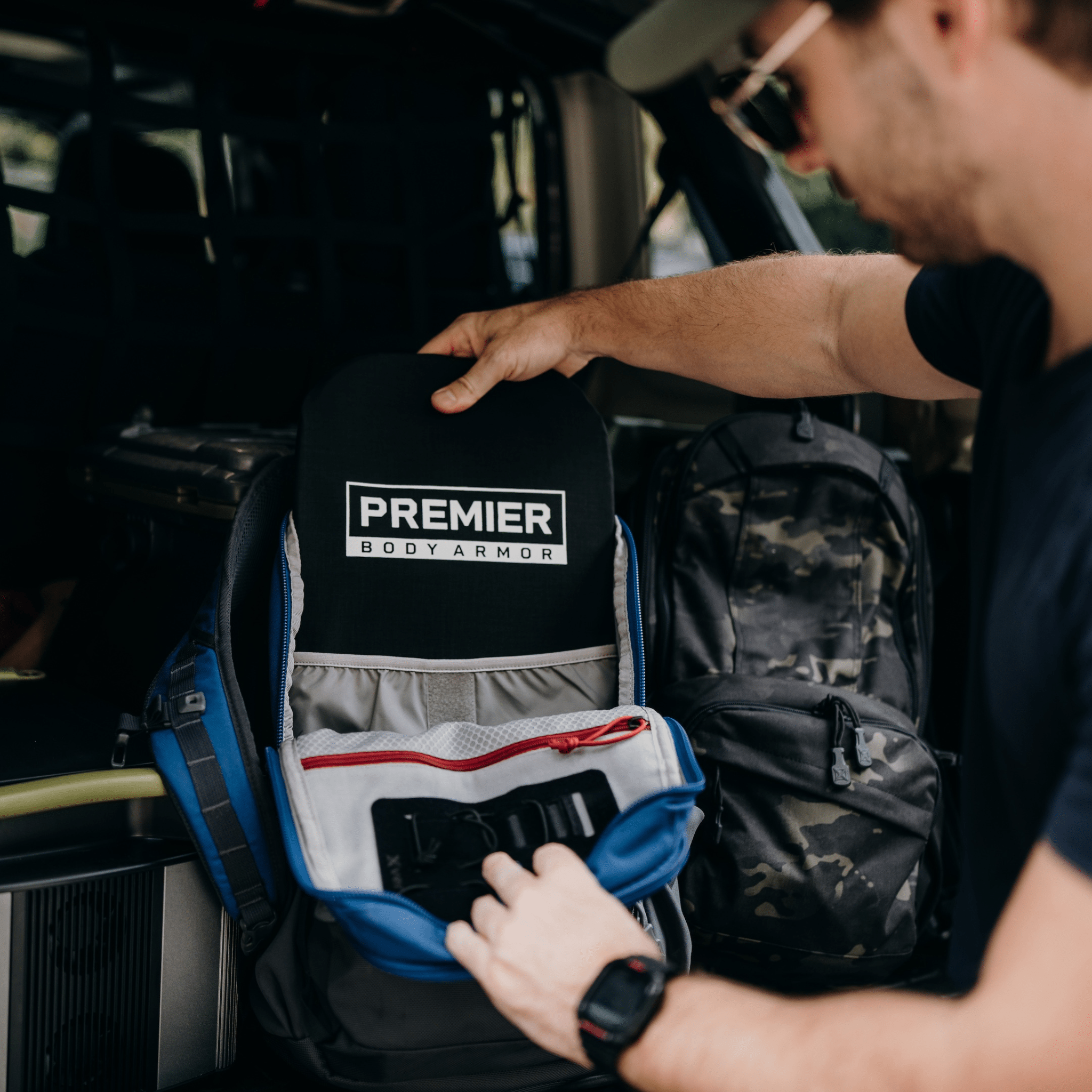Urban Bug Out Bag: Why You Need One and What to Pack
An Urban bug out bag is a bag or backpack that—in an emergency, will help you quickly evade a city or urban area, by providing you all the essential tools and resources you’ll need to survive.

But what scenarios would this come in handy for a prepper? Why specifically an “urban” bag? And what bug out bag essentials would you need to prep? All your questions will be answered, along with a couple of bag recommendations tailored to you.
Why Do You Need an Urban Bug Out Bag at the Ready?
Imagine that in 5 minutes, a massive earthquake strikes. The power grid is out, people are panicking, and your home is crumbling by the second. Would you have all the necessary tools to survive the next several days?
Having the best urban bug out bag would ensure you’re thoroughly prepared to quickly evacuate or be prepared for these disasters (hurricanes, floods, earthquakes, tsunamis) and civil unrest (protests and riots), keeping yourself and your family safe.
What Makes an Urban BOB Different from a Regular BOB?
To tell you the truth, if you’re living on a ranch or a farm, you should look into a regular BOB. But if you live in an urban or suburban area, an urban BOB is essentially an urban survival kit—offering certain advantages a regular BOB doesn’t.
With its design being more compact, you won’t stand out to hostile threats, and you can move more freely. You’ll also be prepping specific gear equipped for the city, such as maps, masks, armor, etc.
In both cases, you want to make sure you have the survival skills and emergency preparedness for whatever environment you're in.
Urban Bug Out Bag Pros and Cons
In a disaster, urban bug out bags give you one of the best chances of survival. But what are some pros and cons?
Pros of an urban bug out bag
- Concealability
- Lightweight
- protective gear
- Efficiency
- Versatility
- Good for urban/suburban environments
Cons of an urban bug out bag
- Limited to short-term survival
- Not as equipped for the wilderness
- Not as good for extreme weather
- Less focused on shelter
Tips for Packing the Best Urban Bug Out Bag
Before you look at what to pack, here a few tips and tricks that will help you with staying organized and creating the best urban bug out bag for a survival situation in an urban environment:
- Get a bag that’s discreet
- Stay organized
- Prep for high-quality lightweight items
- Make sure you can reach critical gear quietly and efficiently
Urban Bug Out Bag List: What to Pack
As you make your urban bug out bag list, think of the environment and different scenarios you’ll encounter. You probably won’t need everything on this urban bug out bag checklist.
Food
When you’re in an emergency, food will become scarce and when the unprepared start roaming the streets, going to the mall and supermarkets is not an option.
As you pack, you’ll want to include food sources that don't require refrigeration or preparation. Things like MREs, survival tabs, and energy bars are great for this because they’re lightweight, have long shelf life, and provide you with a good amount of calories and vitamins.
MRE’s (Meals Ready-to-Eat):
Designed for military personnel, MREs are ready-made meals that provide a great balance of calories, carbohydrates, proteins, and fats to sustain energy and make sure you have the strength for any situation.
Survival tabs:
Different to MREs, survival tabs optimize for efficiency. You won’t get filled up, but you’ll have the most essential vitamins and calories if food ends up becoming scarce.
Energy bars:
When you’re in a pinch and need a quick dose of energy, you’re going to reach for an energy bar—which includes oats, dried fruit, seeds and protein powder to help give you that extra boost.
Water
Having just 1 day without water will lead to extreme fatigue and dehydration. After 3 days, you’ll likely be deceased.
It’s no secret that you need an adequate supply of clean water. A few water bottles should be able to last you several days depending on your body shape and size, and if other people are relying on you. But what if you run out?
Other water sources may be compromised, so you need a way to ensure a constant supply of safe water. Purification tablets or drops take up little to no space in your bag and will get rid of harmful microorganisms and waterborne diseases. You can also buy products with membrane microfilters. As a last resort, you should always have a good way of starting a fire so that you can boil contaminated water and sterilize it.
Hygiene products
A much overlooked necessity is hygiene products. Being on the move, you’re going to come across some unsanitary environments where you’ll be at risk for disease and infection. When you’re in a panic, stressed, and not getting enough sleep, your immune system is more susceptible to microorganisms. Having some sort of soap, wipes, or hand sanitizer will reduce these risks.
Towels and Soap
A clean towel and a bar of soap can rub off dirt and dust on your body, as well as being a great way to clean your equipment.
Toothbrush and Toothpaste
“Don’t forget to brush your teeth.” When you’re in an emergency and a hurricane or earthquake strikes, this is easier said than done. But the worst time to get a cavity is when there are no dentists or healthcare facilities open.
Hand Sanitizer
Hand sanitizer is compact and comes in handy when you don’t have soap or water. In a survival setting, there will be times where you must quickly wash your hands. This could be before eating an MRE/energy bar or when you’re on the move.
Menstrual Products
Tampons, menstrual cups, and other similar products are extremely important to have to prepare for your menstrual cycle. They also have a wide range of applications in a survival setting, and can be useful for fire, filtering, and first aid.
Bathing Wipes
What separates baby wipes from hand sanitizer is its ability to clean dirt from your skin and your equipment. With that being said, if you’re in a warmer environment, these may dry up quickly.
Toilet Paper and Human Waste Disposal Bags
This is one of the major items that we take for granted because it tends to always be there when we need it. In a disaster, having toilet paper and waste disposal bags keeps your environment sanitary from any parasites or viruses from your waste. Getting sick is one of the worst things that can happen in a survival scenario.
Personal Protection
With the growing occurrence of protests and riots, seeing one in your hometown has become increasingly more likely.
The possibility of waking up to the sound of an angry mob has become a real possibility in recent years. The reality is, body armor, masks, and firearms have become essential not only for your own personal protection, but that of your family.
Firearms
Having a reliable firearm, such as a Glock-19 or a Beretta 92, in your urban BOB provides a direct means of self-defense against possible threats. Even if you don’t find it useful right now, it’s guaranteed to be useful in a bug out scenario.
Body/Backpack Armor
You can have all the firepower in the world, but you still need to defend yourself. A quality plate of backpack armor allows you to shield yourself from shooting and ballistic threats. Additionally, it is much easier to lose your firearm than it is to lose something durable that you wear on your body. If you lose access to your firearm, you will maintain protection from high-level threats.

Pepper Spray
Mace®, or pepper spray, is a form of non-lethal self defense that allows you to quickly evade an attacker by disorienting them for a long amount of time. It is smaller and cheaper than a gun, and doesn’t draw as much attention. Because of this, it is a good idea to carry pepper spray, even when you have access to a firearm.
Face Mask or Respirator
What do natural disasters and civil unrest have in common? Air quality. Whether it be dust, wildfires, tier gas, or debris, there’s bound to be contaminants polluting the surrounding air. For this reason, a face mask or respirator is something that is often forgotten about when planning, but is necessary to protect your lungs.
Gloves
Think about how often you use your hands. When things are normal, you rarely run into issues. But in a survival setting, you may very well have to navigate through broken glass and debris. Gloves will allow you to do so without having to waste valuable first aid and hygiene supplies.
Eye and Ear Protection
When chaos erupts and you see debris flying everywhere, crowds chanting, and the loud sirens of cars, a good set of earplugs will protect your ears from long-term damage and a pair of safety glasses will shield your eyes from any dust and flying debris.
Safety Vest
When rescue teams are out, wearing a safety vest will help them quickly locate you—especially if you are in a hard to spot location.
First Aid
During an emergency, you’re bound to get cuts, wounds, or other injuries that need to be immediately addressed. It’s likely that medical assistance will be delayed from helping other people or you haven’t been found; so, having a medkit will help you treat those larger wounds. For minor injuries (minor cuts and bleeding), a quality bleed kit will help deter infections and decrease blood loss.
Sleeping Supplies
Sleep becomes even more important in a disaster. Without sleep, your muscles will weaken, stress will increase, and you won’t be able to think clearly. But how can you get adequate sleep if you’re unable to reach a safe indoor location?
The best thing you can do is to get a portable shelter, like a tent or tarp, and a sleeping bag to protect you from the harsh elements of nature.
Sleeping Bag
When you’re shivering in the cold, a sleeping bag will provide the correct amount of warmth and comfort to make sure you’re able to get good rest. Make sure to find one that is rated at a temperature lower than what you anticipate.
Tent
If you find yourself in a windy or rainy area, a tent offers an immediate solution, acting as a shield from the rain and wind. Not having a tent makes survival a much more complicated process.
Tarp
A little more compact and portable, a tarp offers a variety of uses like ground cover, shelter, and even collecting rain. While it is a more versatile tool than a tent, keep in mind that it won’t do as good a job keeping animals and insects away while you sleep.
Change of Clothes
After an extended period of time, your clothes are bound to get wet and dirty—which is where a fresh set of clothes will come in handy.
When determining the right set of clothes, think of something versatile that could withstand different conditions.
A pair of jeans and a nice t-shirt is always reliable, but if you find yourself in an area with a lot of rain, look for some sort of waterproof coat or jacket. Also, be sure to have a good pair of socks so your feet stay comfortable during sustained periods of travel.
Communication Devices
In order to thoroughly plan your next steps, you need some sort of communication device to get in contact with loved ones and emergency services throughout the crisis.
You’ll probably reach for your phone, but what if the network is down, or your battery is about to die? A walkie talkie and portable charger are great support tools that will allow you to stay in communication.
Cell Phones
Aside from being able to communicate with people, a phone will help you gather information when possible to help you navigate through the chaos. Cellular devices are also very fragile, so make sure to store them in a durable waterproof case.
Walkie Talkies
In the absolute worst case scenario—the network goes down, walkie talkies provide reliable communication so you can coordinate with friends and family.
Portable Battery Chargers
Don’t be surprised if you find yourself stuck in a crisis for a few days. A typical disaster can last from several days to even a few weeks, and having a portable charger will ensure you maintain communication for these extended periods of time.
Navigational Aids
Walking around aimlessly and hoping for a good outcome is one of the most dangerous and frightening things you can do in an emergency situation.
A cell phone and GPS will help you determine a location and safely navigate through a city; but if the network goes down, a map and a compass is a good backup to guide you to important destinations.
Maps
When GPS or mobile devices are unavailable, a map of the city will help identify routes, landmarks, and safe zones you could go to during emergencies. If possible, try to keep waterproof or tear-proof maps on hand.
Compass
While a map shows where you are and where you need to go, a compass makes interpreting a map much easier. Sometimes a compass alone is enough to help figure out where you need to go.
Flashlight
Power outages are common in disasters, so a flashlight is crucial for visibility in low-light conditions and/or being able to signal for help. We go through most of our lives with light that is easily accessible, so a flashlight is often one of the most overlooked tools when making a survival kit.
Other Smart Urban Bug Out Bag Additions
Multi-Tool
In a survival scenario, you’ll come across a variety of different obstacles and challenges. This is where the versatility of a multi-tool could save your life. In one compact tool, you’ll be able to fix repairs, open packages, use it as a self defense weapon, and build shelter.
Cash
In the event ATMs or credit card systems are down, having cash could help you buy or trade necessary tools and items, or even secure you and your loved ones on transport.
Copies of Personal Documents
During and after an emergency, people often run into situations where they must prove their identity, so be sure to have copies of personal documents to access your resources and essential services. Having personal documents also makes it easier for emergency services to identify you in case you don’t make it.
Paracord
Paracord is one of the key components of any survival kit. It has many uses from harnessing yourself or your gear intact, making repairs, fishing, building a shelter, starting a fire, or escaping dangerous situations.
Duct Tape
Duct tape is good for repairing equipment, securing gear, and patching holes in your tent/tarp. With duct tape, you never know what you can expect to use it for, all you can be sure is that you will use it for something.
Zip Ties
Although not as versatile as duct tape or paracord, zip ties provide a quick and easy way to firmly bundle or secure items, as well as being able to organize gear and make repairs.
Playing Cards
After a long and stressful day, a deck of cards provides a good analog source of entertainment to relieve stress and maintain morale even when times are tough.
Picking the Right Urban Bug Out Bag
As you choose your bag, think about the environment you’re in and what you want to optimize for. If you need a lot of movement and agility, the Armored Vertx Commuter bundle is a great option. It’s light, compact, comfortable, and has high-quality ballistic grade protection. This bag is perfect in situations that require you to be light on your feet with quick access to essential urban bug out bag contents.
If you need something that can carry more equipment, a Viktos Perimeter 25 has a lot more compartments and space. Despite its size, the Perimeter 25 maintains the same level of comfort and full ballistic protection without making you stand out.
Now, if you want to get more into detail on backpack armor– how to use it, how it works, and what it can protect against—learn more on our Bulletproof Backpack Armor page and get all of your questions answered.
More protection?
Having a well-equipped backpack is great, but it’s not foolproof. In an emergency situation, you’ll want to have proper body armor that will cover the front and back of your body and protect you in case you lose your bag. Not only that, but having your body covered allows you to use your bag to protect your head or others.
Depending on what you prioritize, there are two ways to differentiate armor: concealable and tactical. They each have their pros and cons, and to find out which one suits you best, visit our blog on Tactical Vs Concealable Body Armor.
And if you’re new to body armor and don’t know where to start, you can check out our article on where and how to wear body armor where we cover everything in detail.










Leave a comment